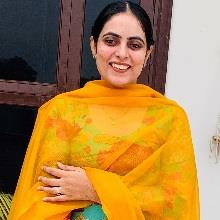Smart textiles, also known as e-textiles or intelligent textiles, represent a transformative advancement in the textile industry, merging technology with traditional fabrics. These textiles are designed to sense, respond, and adapt to environmental stimuli, offering functionality beyond the capabilities of conventional materials. This paper explores the types of smart textiles, the technologies enabling them, and their diverse applications in daily wear, ranging from healthcare and fitness to fashion and safety. Furthermore, it discusses challenges and future prospects, emphasising the potential of smart textiles to revolutionise everyday life.
Smart textiles have emerged as a pivotal innovation in modern technology, bridging the gap between fashion, science, and engineering. Unlike traditional fabrics, smart textiles integrate electronics, sensors, and advanced materials to perform dynamic functions. These innovations align with the growing consumer demand for multifunctional clothing that caters to health, performance, and style. The evolution of smart textiles has been driven by advancements in nanotechnology, material science, and connectivity, with applications now extending beyond niche markets into mainstream daily wear.
Smart textiles are broadly categorised into three types:
• Passive Smart Textiles: Passive smart textiles are the simplest form of intelligent textiles. They are capable of sensing environmental changes, such as temperature, UV radiation, or moisture, without actively responding. Examples include UV-protective fabrics that shield wearers from harmful solar rays or moisture-wicking athletic wear designed to keep users dry during physical activity.
• Active Smart Textiles: Active smart textiles go a step further by incorporating elements that respond to stimuli. These textiles can adjust properties like colour, shape, or temperature in real time. For example, thermochromic fabrics change colour in response to heat, while phase-change materials embedded in garments regulate body temperature by absorbing and releasing heat.
• Ultra-Smart Textiles: Ultra-smart textiles integrate advanced technologies such as Artificial Intelligence (AI) and Internet of Things (IoT) connectivity. These fabrics can sense, process, and react autonomously to multiple inputs. Examples include self-healing fabrics that repair small tears and smart garments that provide real-time health analytics via integrated AI systems.
Smart textiles have found applications across various aspects of daily life, making them versatile and essential for modern living. Below are key areas where smart textiles are making a significant impact:
Healthcare and Wellness
Health Monitoring: Smart textiles embedded with sensors are revolutionising healthcare by allowing non-invasive monitoring of vital signs such as heart rate, respiratory rate, and blood pressure. For instance, Hexoskin smart shirts provide continuous biometric data for medical use and fitness tracking.
Therapeutic Textiles: These include garments designed for drug delivery, compression therapy, or managing chronic conditions. For example, compression socks embedded with pressure sensors can help individuals with circulation issues.
Antimicrobial Fabrics: With growing concerns about hygiene, textiles with built-in antimicrobial properties are increasingly popular. These fabrics inhibit the growth of bacteria and fungi, keeping wearers safe from infections.
Sports and Fitness
Performance Monitoring: Athletes can now track their performance in real time using smart sportswear equipped with motion and biometric sensors. For example, fitness garments like those from Sensoria analyse running form and suggest improvements to reduce injury risk.
Thermal Regulation: High-tech fabrics that adapt to body heat or external temperature changes help athletes maintain optimal performance levels during intense workouts or varying weather conditions.
Posture Correction: Smart garments with integrated sensors provide feedback on body alignment, assisting in maintaining proper posture during exercise or daily activities.
Fashion and Style
Interactive Clothing: Fashion-forward garments now integrate LED lights or fibre optics to offer customisable patterns and colours. For instance, dresses that light up or change hues in response to music are popular in high-tech fashion shows.
Mood-Sensitive Fabrics: Advances in nanotechnology have enabled fabrics that respond to the wearer’s emotional state, changing colours or patterns to reflect mood shifts.
Self-Cleaning Clothing: Fabrics treated with nanotechnology repel dirt and liquids, reducing the need for frequent washing. This innovation is particularly useful in professional and outdoor settings.
Safety and Protection
Protective Gear: Firefighters, construction workers, and industrial labourers benefit from smart textiles that offer fire resistance, impact absorption, and chemical protection.
Reflective Textiles: High-visibility garments embedded with reflective or LED components improve safety for cyclists and pedestrians during low-light conditions.
GPS-Enabled Wearables: Smart fabrics with integrated GPS systems enhance personal safety by allowing real-time location tracking in case of emergencies.
Technologies Behind Smart Textiles
The development of smart textiles relies on several advanced technologies:
Sensors and Actuators
Sensors embedded within fabrics detect changes in the environment or the wearer’s body, while actuators enable responses such as heating, cooling, or light emission.
Conductive Threads and Fabrics
Materials like silver-coated threads and graphene enable the seamless integration of electronics into textiles, allowing for conductivity without compromising flexibility.
Shape-Memory Materials
These advanced materials retain a programmed shape and can adapt to external stimuli such as heat or pressure, making them ideal for garments that provide structural support.
Internet of Things (IoT)
IoT connectivity allows smart textiles to interact with other devices, enabling remote control and real-time data sharing. For example, connected fitness garments sync with apps to analyse performance metrics.
Google’s Project Jacquard
A collaboration between Google and Levi’s resulted in a smart denim jacket that allows users to control smartphones by tapping or swiping touch-sensitive areas on the sleeve.
Nike Adapt BB
Nike’s self-lacing sneakers adjust fit and comfort levels automatically based on foot movement and activity, providing optimal support for athletes.
Lumen Couture
This fashion brand integrates programmable LED displays into clothing, enabling wearers to display custom graphics, messages, or animations.
While smart textiles hold immense promise, several challenges hinder their widespread adoption:
High Production Costs
The integration of advanced technologies significantly increases manufacturing costs, making smart textiles less accessible to mainstream consumers.
Durability and Washability
Ensuring that electronic components withstand repeated washing and daily wear is a major hurdle in smart textile development.
Consumer Awareness
Limited understanding of smart textiles and their benefits among consumers slows market penetration and adoption rates.
Sustainability Issues
The environmental impact of disposing textiles embedded with electronic components raises concerns, highlighting the need for recyclable and biodegradable options.
The future of smart textiles is bright, with ongoing research and innovation paving the way for new possibilities:
Affordable Smart Textiles
Advances in production methods are expected to lower costs, making these technologies more accessible to everyday consumers.
Self-Healing and Self-Cleaning Materials
Research into nanotechnology and advanced polymers promises fabrics that can repair themselves and repel dirt or stains, reducing maintenance requirements.
Enhanced Sustainability
Efforts are underway to develop biodegradable electronic components and recyclable fabrics, minimising environmental impact.
Expanded Applications
Beyond daily wear, smart textiles are likely to find increased use in education, military applications, and immersive entertainment experiences.

20250117163420.jpg)





20250219104125.png)
Comments